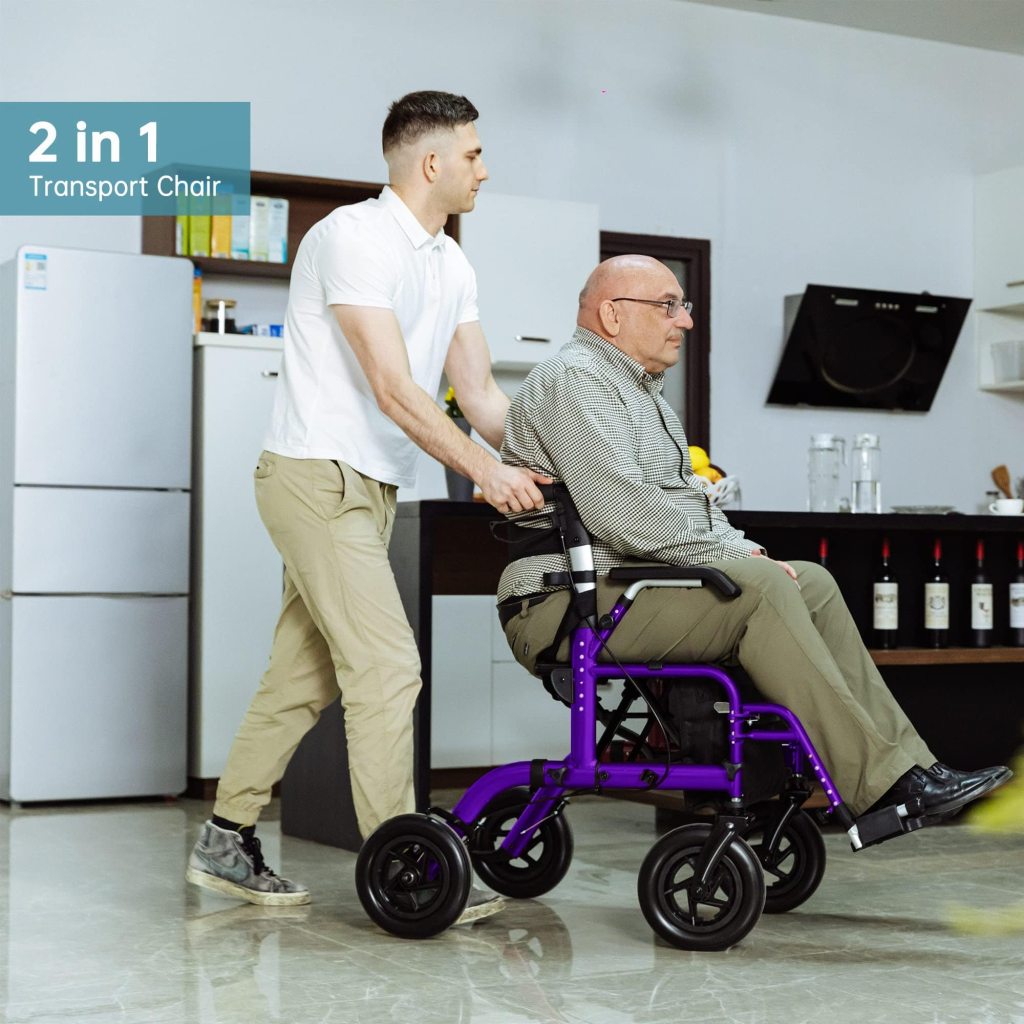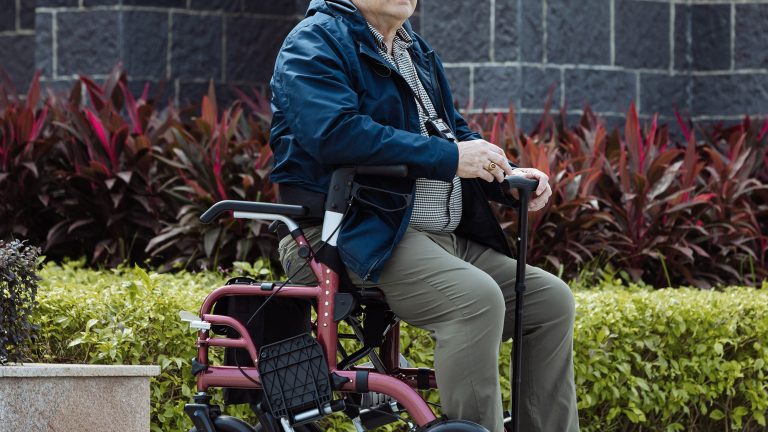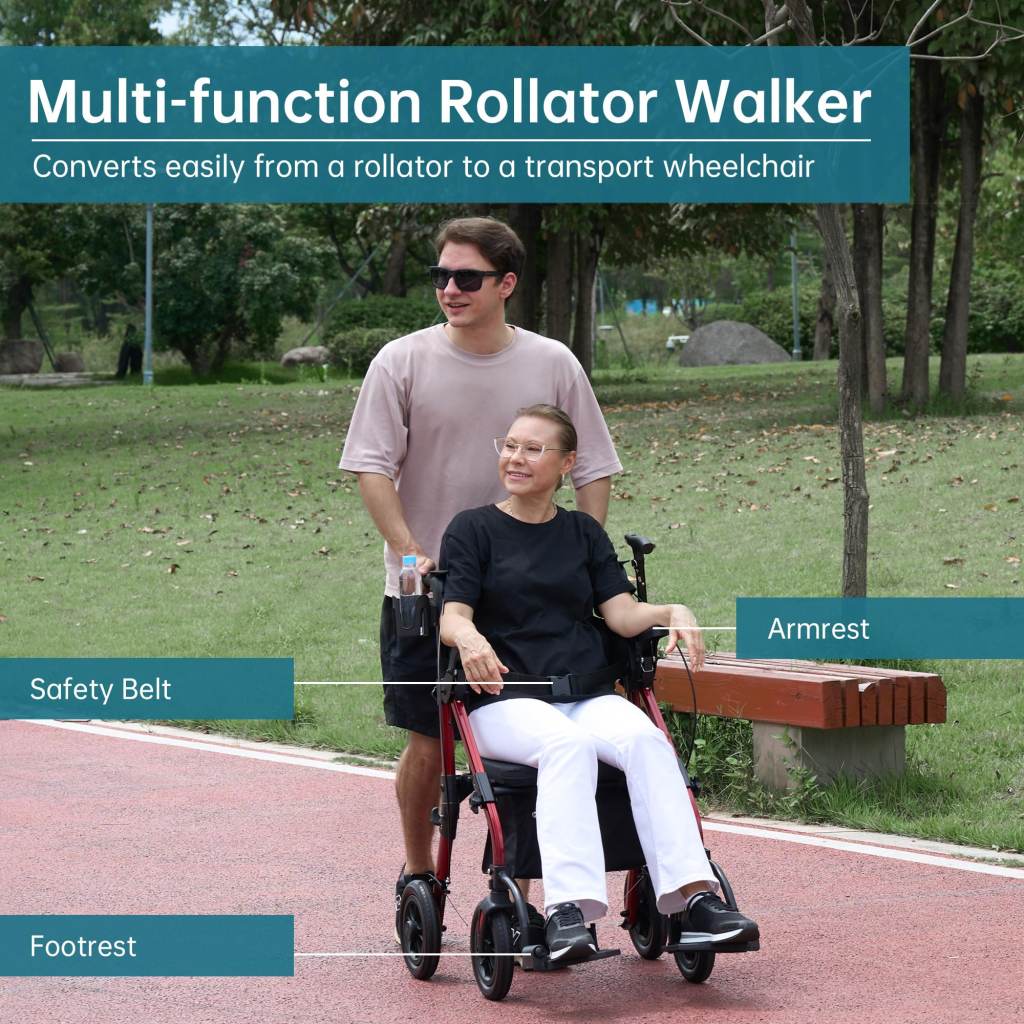Are rollator wheelchairs suitable for individuals recovering from a stroke?
Recovering from a stroke is often a long and challenging journey. For many stroke survivors, one of the biggest hurdles is regaining the ability to walk and move around independently. While some people regain full mobility, others may need extra help during their recovery. That’s where rollator wheelchairs come into play.
If you’re wondering whether a rollator wheelchair could be a good fit for someone recovering from a stroke, you’re in the right place. Let’s break it down in simple terms to help you understand how these mobility aids work, and whether they could benefit someone who’s recovering from a stroke.
What is a Rollator Wheelchair?
First things first: What exactly is a rollator wheelchair? A rollator is essentially a mix between a walker and a wheelchair. It has four wheels (compared to the usual two on standard walkers), which means it can be easily pushed along while the user walks or sits. Most rollators also have brakes, a seat for resting, and adjustable handles. Some models, like the 3 in 1 rollator walker, can convert into a wheelchair, providing even more flexibility for those who need it.
The idea behind a rollator walker wheelchair is that it allows individuals to move freely when they’re able to walk but provides support when they need to sit and rest or have trouble walking on their own. This makes it a great option for people recovering from a stroke who may not have the stamina to walk long distances but still want the option of walking with some assistance.

How Can Rollator Wheelchairs Help Stroke Survivors?
When someone has a stroke, it can affect their strength, balance, and coordination. These challenges can make it hard to walk or move around without assistance. This is where a rollator walker wheelchair can be incredibly helpful. Here’s how:
1. Supports Walking with Stability
After a stroke, many people experience difficulty walking, especially if one side of their body is weaker than the other. A rollator can provide the stability needed to help people walk more safely. The wheels on a rollator make it easier to glide across the floor, and the sturdy frame offers support when taking steps, especially for people who are still regaining strength and coordination.
2. Provides Resting Options
Stroke recovery can be exhausting, and it’s important to take breaks. That’s where the seat on most rollator walkers comes in handy. A 3 in 1 rollator walker can even convert into a wheelchair, giving people a quick way to sit down when they feel fatigued. This flexibility helps users avoid overexertion while still being able to get around.
3. Improves Independence
For stroke survivors, regaining independence is one of the most important parts of recovery. Using a rollator walker wheelchair means they can move around their home, go for walks, and do everyday activities without relying entirely on others. The added mobility and freedom are key to feeling more in control and less restricted.

4. Easy to Maneuver
Unlike traditional walkers that might feel heavy or difficult to push, a rollator walker wheelchair is designed to be lightweight and easy to maneuver. This makes it easier for someone recovering from a stroke to get around. Whether it’s inside the house or outside, a rollator walker wheelchair makes it much simpler to navigate different environments.
Are There Special Considerations for Stroke Survivors?
While rollator wheelchairs can be incredibly helpful, it’s important to know that they might not be the right choice for everyone. Some stroke survivors may need a different type of mobility aid depending on the severity of their stroke and their specific recovery needs.
1. Upper Body Strength
If a stroke survivor has significant weakness in their arms or upper body, using a rollator walker wheelchair might be a bit challenging. Some electric rollator walkers can help in these situations, as they have motorized features to assist with movement. However, not all stroke survivors will be able to use these devices right away. It’s best to work with a healthcare provider or physical therapist to determine the most suitable mobility aid.
2. Balance Issues
If the stroke has affected a person’s balance or caused dizziness, a rollator walker wheelchair with a seat and sturdy brakes can offer some added security. However, those who have severe balance problems might find it safer to use a traditional wheelchair or even an electric wheelchair, depending on their level of independence.
3. Comfort and Fit
For anyone recovering from a stroke, comfort is key. That’s why it’s important to choose a rollator walker wheelchair that fits well. Adjustable handles and a comfortable seat are essential for those who need extra support during their recovery. When considering a 3 in 1 rollator walker, make sure it has the features that best suit the person’s needs.
Should Stroke Survivors Use Rollator Wheelchairs?
In many cases, yes—rollator wheelchairs can be a fantastic mobility aid for people recovering from a stroke. They offer balance and stability, provide an easy way to sit and rest, and help stroke survivors regain their independence. However, like with any mobility device, it’s important to consider the person’s specific needs and recovery goals.
If you’re unsure about which mobility aid is best for someone recovering from a stroke, it’s always a good idea to consult with a healthcare professional. They can help evaluate the individual’s strength, coordination, and mobility needs and recommend the right solution, whether that’s a rollator, electric wheelchair, or another option.

